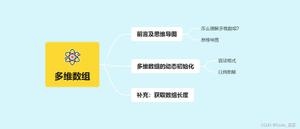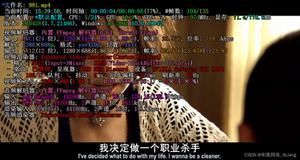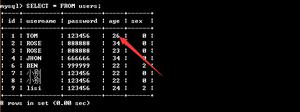Java,如何绘制不断变化的图形
以前没有做过,所以显然我很烂。在此处,当前鼠标位置周围的64个像素会在窗体上绘制得更大一些。问题是,它有点“慢”,而且我不知道从哪里开始修复。
除此之外,我还创建了一个线程,该线程在完成时会不断调用更新图形,并像文本一样以每秒fps的速度调用,以真正显示绘制速度。
替代文字
代码示例:
@SuppressWarnings("serial")public static class AwtZoom extends Frame {
private BufferedImage image;
private long timeRef = new Date().getTime();
Robot robot = null;
public AwtZoom() {
super("Image zoom");
setLocation(new Point(640, 0));
setSize(400, 400);
setVisible(true);
final Ticker t = new Ticker();
this.image = (BufferedImage) (this.createImage(320, 330));
addWindowListener(new WindowAdapter() {
public void windowClosing(WindowEvent we) {
t.done();
dispose();
}
});
try {
robot = new Robot();
} catch (AWTException e) {
e.printStackTrace();
}
t.start();
}
private class Ticker extends Thread {
public boolean update = true;
public void done() {
update = false;
}
public void run() {
try {
while (update == true) {
update(getGraphics());
// try {
// Thread.sleep(200);
// } catch (InterruptedException e) {
// e.printStackTrace();
// return;
// }
}
} catch (Exception e) {
update=false;
}
}
}
public void update(Graphics g) {
paint(g);
}
boolean isdone = true;
public void paint(Graphics g) {
if (isdone) {
isdone=false;
int step = 40;
Point p = MouseInfo.getPointerInfo().getLocation();
Graphics2D gc = this.image.createGraphics();
try {
for (int x = 0; x < 8; x++) {
for (int y = 0; y < 8; y++) {
gc.setColor(robot.getPixelColor(p.x - 4 + x, p.y
- 4 + y));
gc.fillOval(x * step, y * step, step - 3, step - 3);
gc.setColor(Color.GRAY);
gc.drawOval(x * step, y * step, step - 3, step - 3);
}
}
} catch (Exception e) {
e.printStackTrace();
}
gc.dispose();
isdone = true;
iter++;
}
g.drawImage(image, 40, 45, this);
g.setColor(Color.black);
StringBuilder sb = new StringBuilder();
sb.append(iter)
.append(" frames in ")
.append((double) (new Date().getTime() - this.timeRef) / 1000)
.append("s.");
g.drawString(sb.toString(), 50, 375);
}
int iter = 0;
}
所做的更改:
*添加了“ gc.dispose();”
*添加了“ isdone”,因此不能更快地调用重绘,然后应该这样。
* 将此链接添加到thrashgod源重写
* 将此链接添加到thrashgod源重写2
回答:
这是我的主要重写,其中包含以下值得注意的更改:
- 我将检测像素颜色的任务与绘图任务分开了
- 我已将robot.getPixelColor(…)替换为robot.createScreenCapture(…),以一次获取所有64个像素,而不是一次获取一个像素。
- 我介绍了智能剪辑-仅重绘需要重绘的内容。
- 我已经修复了线程,因此对模型和视图的所有更新都发生在事件调度线程上
股票行情不断运行。当它检测到像素颜色的变化(由于鼠标移至其他区域或鼠标下方的像素变化)时,它会准确检测出变化的内容,更新模型,然后请求视图重新绘制。这种方法可以立即更新到人眼。289次屏幕更新累计花费了1秒。
在一个安静的星期六晚上,这是一个令人愉快的挑战。
import javax.swing.*;import java.awt.*;
import java.awt.event.WindowAdapter;
import java.awt.event.WindowEvent;
import java.awt.geom.Ellipse2D;
import java.awt.image.BufferedImage;
public class ZoomPanel extends JPanel {
private static final int STEP = 40;
private int iter = 0;
private long cumulativeTimeTaken = 0;
public static void main(String[] args) {
final JFrame frame = new JFrame("Image zoom");
final ZoomPanel zoomPanel = new ZoomPanel();
frame.getContentPane().add(zoomPanel);
final Ticker t = new Ticker(zoomPanel);
frame.addWindowListener(new WindowAdapter() {
public void windowClosing(WindowEvent we) {
t.done();
frame.dispose();
}
});
t.start();
frame.setLocation(new Point(640, 0));
frame.pack();
frame.setVisible(true);
}
private final Color[][] model = new Color[8][8];
public ZoomPanel() {
setSize(new Dimension(400, 400));
setMinimumSize(new Dimension(400, 400));
setPreferredSize(new Dimension(400, 400));
setOpaque(true);
}
private void setColorAt(int x, int y, Color pixelColor) {
model[x][y] = pixelColor;
repaint(40 + x * STEP, 45 + y * STEP, 40 + (x * STEP) - 3, 45 + (y * STEP) - 3);
}
private Color getColorAt(int x, int y) {
return model[x][y];
}
public void paintComponent(Graphics g) {
long start = System.currentTimeMillis();
if (!SwingUtilities.isEventDispatchThread()) {
throw new RuntimeException("Repaint attempt is not on event dispatch thread");
}
final Graphics2D g2 = (Graphics2D) g;
g2.setColor(getBackground());
try {
for (int x = 0; x < 8; x++) {
for (int y = 0; y < 8; y++) {
g2.setColor(model[x][y]);
Ellipse2D e = new Ellipse2D.Double(40 + x * STEP, 45 + y * STEP, STEP - 3, STEP - 3);
g2.fill(e);
g2.setColor(Color.GRAY);
g2.draw(e);
}
}
} catch (Exception e) {
e.printStackTrace();
}
iter++;
g2.setColor(Color.black);
long stop = System.currentTimeMillis();
cumulativeTimeTaken += stop - start;
StringBuilder sb = new StringBuilder();
sb.append(iter)
.append(" frames in ")
.append((double) (cumulativeTimeTaken) / 1000)
.append("s.");
System.out.println(sb);
}
private static class Ticker extends Thread {
private final Robot robot;
public boolean update = true;
private final ZoomPanel view;
public Ticker(ZoomPanel zoomPanel) {
view = zoomPanel;
try {
robot = new Robot();
} catch (AWTException e) {
throw new RuntimeException(e);
}
}
public void done() {
update = false;
}
public void run() {
int runCount = 0;
while (update) {
runCount++;
if (runCount % 100 == 0) {
System.out.println("Ran ticker " + runCount + " times");
}
final Point p = MouseInfo.getPointerInfo().getLocation();
Rectangle rect = new Rectangle(p.x - 4, p.y - 4, 8, 8);
final BufferedImage capture = robot.createScreenCapture(rect);
for (int x = 0; x < 8; x++) {
for (int y = 0; y < 8; y++) {
final Color pixelColor = new Color(capture.getRGB(x, y));
if (!pixelColor.equals(view.getColorAt(x, y))) {
final int finalX = x;
final int finalY = y;
SwingUtilities.invokeLater(new Runnable() {
public void run() {
view.setColorAt(finalX, finalY, pixelColor);
}
});
}
}
}
}
}
}
}
以上是 Java,如何绘制不断变化的图形 的全部内容, 来源链接: utcz.com/qa/421749.html







